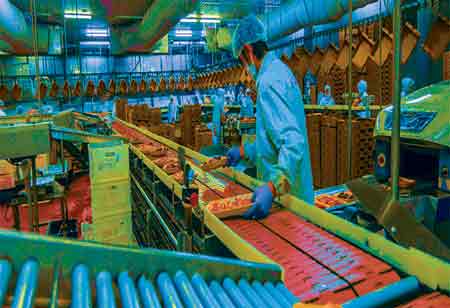Thank you for Subscribing to Food Business Review Weekly Brief
Major Problems Facing the Food Distribution Sector
Food logistics may seem straightforward, but it involves a great deal of complexity

By
Food Business Review | Saturday, December 17, 2022
Stay ahead of the industry with exclusive feature stories on the top companies, expert insights and the latest news delivered straight to your inbox. Subscribe today.

Food logistics may seem straightforward, but it involves a great deal of complexity.
FREMONT, CA: Food logistics may appear simple, but the process is quite complex. Thirty-three percent of food is lost or wasted during the shipping process. At the same time, perishable items spend 50 percent of their shelf life being transported, according to studies conducted by the Logistics Bureau.
This is only the tip of the iceberg regarding food shipping firms' difficulties. There are billions of dollars lost each year due to food spoilage during transit, resulting in enormous losses for enterprises.
Due to the ever-changing nature of the shipping sector, it is only prudent to engage with a knowledgeable and qualified 3PL supplier with supply chain expertise. This allows you to utilize the company's resources and bypass the obstacles that most food delivery companies experience, putting you ahead of your competition.
Now, let's examine food distribution companies' most significant obstacles:
Temperature and Relative Humidity: Food fulfillment is crucial to any organization because it may build or destroy your reputation. Transporting perishable foods from the producer to the consumer is more complex than it sounds. A minor error, such as improper temperature and humidity, can cause all food to spoil or drastically shorten its shelf life.
Temperature and humidity must be maintained at specific levels during transport to preserve food's freshness. Fresh vegetables must be kept cool and refrigerated because bacteria tend to develop in warm environments.
Fresh fruits such as oranges and grapes should be stored between 0 and 2 degrees Celsius and 95 and 100 percent relative humidity. Onions and garlic, on the other hand, must be kept at similar temperatures but at humidity levels of 65-75 percent because high humidity levels damage them.
The optimal storage conditions for cold-sensitive perishables such as mangoes and bananas are between 13 and 15 degrees Celsius and 85 to 90 percent humidity.
Based on the temperature above and humidity conditions, it is clear that maintaining the freshness and safety of food during shipping is highly specialized and dependent on the type of food. This can make it challenging for food shipping businesses to optimize shipping settings to their fullest potential.
Technology Deployment: In the food distribution industry, technology usage has exploded. Food shipping firms must continually seek more cost-effective methods of delivering their produce to merchants to remain competitive and avoid waste.
Utilizing current technology is an essential means of reaching this goal. For instance, contemporary tracking equipment and technology enable food transportation businesses to respond swiftly to demand while allowing partners to modify their delivery schedules promptly.
Even though the food distribution business has observed the benefits of these technologies, most shipping companies continue to need help with their implementation. This is primarily due to the cost and complexity of maintaining the technologies.
Fortunately, food shipping companies can outsource all or a portion of their business processes to a third-party logistics provider with the necessary expertise, capacity, personnel, and information technology. This will help them save expenses, manage the supply chain effectively, and improve regulatory compliance.
Deterioration During Transport: Transporting perishable goods and beverages present food shippers with an additional difficulty—impact damage. Nobody likes to purchase food that is damaged or spoiled. Therefore, if the food is harmed during transport, it will likely never reach the consumer.
About 14 percent of food is wasted between the time it is harvested and the time it reaches consumers. Food is lost during transit due to shocks and vibrations caused by movement. If ineffective packaging procedures or wrapping are utilized, or if the goods are not correctly loaded, the damage could worsen.
Such food waste and spoilage are costly and decrease customer pleasure. When a transporter receives more food to send than it can handle, it may pack additional pallets in a single van to save money, which typically results in damaged goods.






